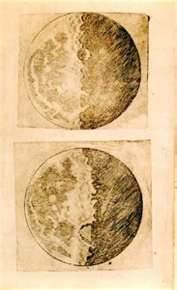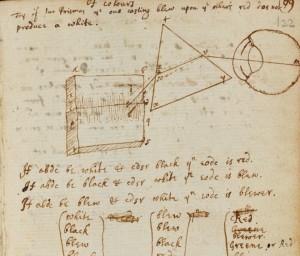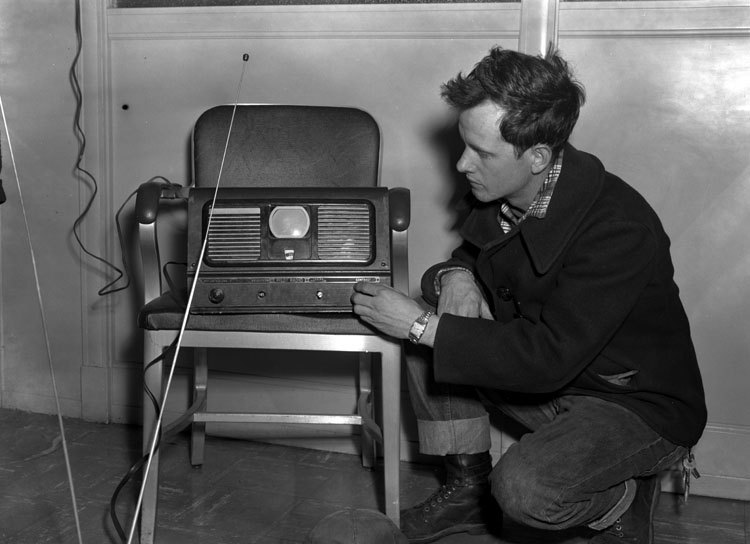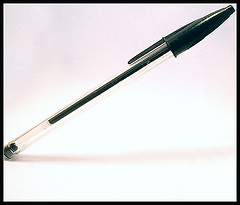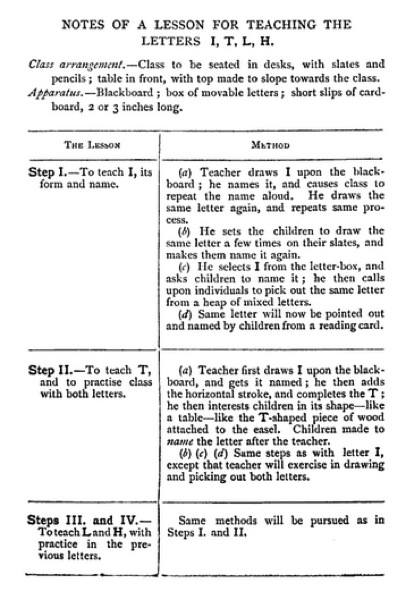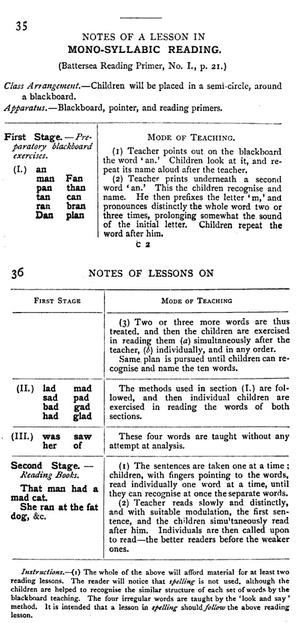Written by Deanna Stefanyshyn and Julie Kendell
Introduction
Technology has the power to affect not only education but also culture, religion and personal thoughts and beliefs. While the world population is continually growing, our global world seems to be getting smaller as we are able to connect to people in a way that was never imagined. Radio and television were among the early contributors to this new form of mass media and played a role in affecting world political views and religious beliefs as well as changing how we view literacy in an educational setting. While these technologies started off as a form of entertainment, people quickly began to see the advancements and benefits that these technologies could bring to an educational setting. As with any new technology, the use of radio and television in the classroom faced resistance and limitations that set a pattern for inclusion of advancements even in today’s educational world.
Silent Films
The earliest known media available to teachers were termed ‘visual education’ or ‘visual instruction’ because they did not yet combine the advancement of sound. For example, silent films were used in the classroom along with photographs, well before films with sound and audio recordings gained popularity (Cortez, 2009). In fact, silent films showed so much promise in the educational world that Thomas A. Edison predicted “Books will soon be obsolete in schools …. Our school system will be completely changed in the next ten years” (Saettler 1968, p. ). However, it was found that especially in the beginning of film use, teachers were only using it occasionally in their classrooms. Some reasons that were recorded were “teachers’ lack of skill in using equipment and film; the cost of films, equipment, and upkeep; inaccessibility of equipment when it was needed; and the time involved in finding the right film for each class” (Mehlinger, n.d.). What is not surprising is that these specific roadblocks are often the same reasons given by teachers today when discussing their use of 21st century technology.
School museums were a popular venue for the first visual instructional materials and allowed for distribution of portable exhibits including slides, films and study prints to schools (Saettler, 1968). In order to gain respect from teachers, it was very important that these materials were viewed as supplementary curriculum materials that would enhance lessons rather than replace the teacher entirely. Even today teachers continue to fight for their standing as the primary source of instruction while maintaining autonomy in their use of media. This very idea has brought forth professionals in the field to argue that:
“(a) teachers should be viewed on an equal footing with instructional media-as just one of many possible means of presenting instruction, and (b) teachers should not be given sole authority for deciding what instructional media will be employed in classrooms ” (Reiser, 2001, p. 55).
Considering this has been an issue in education for the past 90 years, there does not appear to be a definitive answer that will come anytime soon.
Radio
“Radio broadcasting is one of the greatest educational tools which has ever been placed at the disposal of civilized man. It is an instantaneous, universal means of communication. It is not a new art, but is a means of multiplying the efficiency of oral communication just as the printing press multiplied the effectiveness of the written word. In addition to that, it has certain decided advantages over the printed page which it in part supplants and in part supplements” (Tyler, 1935. p.115).
While, the invention of radio dates all the way back to the 1820’s when Hans Christian Orsted discovered the relationship between electricity and magnetism, it wasn’t until between 1916 and 1920 that the first known radio news program was broadcast (Wikipedia, 2012) . As time went on the world of radio grew in both scope and popularity, and many broadcasts began to hit the radio waves.
Radio became a new form of communication and entertainment. Between the 1920’s and 1950’s many radio shows were broadcast, and gathering around the radio in the evening was a common form of entertainment. People, regardless of where they were located and what class they belonged to, could tune in to listen to news, sports broadcasts, comedy shows, dramas, live music and political addresses. Radio was a way for people to escape the care of their everyday lives. The world began to become a much smaller place in the minds of many people as they began to see that we were all, in a way, interconnected.

Radios grew even more in popularity during the late 1920’s and early 1930’s due to the Great Depression. While most other forms of entertainment were expensive, the radio provided entertainment free of charge right in your own home. Radio became a vital link to information and had the power to influence people’s opinions in a way that had never been seen before. People could find out what was happening in the world quickly after it happened and it was much faster than waiting for the newspapers to print a story. The invention of the radio also had an effect on religion as religious broadcasting was born. Benjamin Armstrong, former president of the National Religious Broadcasters, described radio and other electronic media as the “new Pentecost that communicates religious belief directly to the homes and hearts of individual listeners and viewers” (Armstrong, 1979, p. 7).
While radios became commonplace in most homes in the United States during the 1920’s and 1930’s, radio also began to gain popularity in the area of education. Many felt that radio had the power to bring the world to the classroom, and that radio programs could be presented as if they were textbooks of the air (Lindgren, 2004). While textbooks were the most common place to gain understanding and information at this time, it quickly became clear that other mediums could be beneficial if used properly. Usually the radio programs that were created were in line with the general classroom curriculum. However, studies have revealed that there were major contrasts between the content of schoolbooks and the content that was on the radio (Lindgren, 2004). Radio programs opened up the arena to discussing contemporary progressive ideas and political notions. These progressive ways of thinking were not readily available to students in a classroom. Children who listened to educational radio encountered views of society that were much different than the views that were shown in their school books (Lindgren, 2004).
Beginning in 1920, the Canadian National Railway, a non-educational agency, invested in radio infrastructure and saw the need for educational radio. The CNR used radios as a form of entertainment for their passengers; however, the president of the CNR Sir Henry Thorton saw both the social and commercial value in providing educational programming as a public service (Buck, 2006). Beginning in 1925, educational programs were broadcast in Canada. Success of the CNR’s educational broadcasts encouraged Thornton and the CNR to expand educational offerings, and they began to use this technology to reach the learning disabled. In 1926 broadcasts from the CNR were created for reception at the Point Grey School for Deaf and Blind in Vancouver (Buck, 2006). People believed that broadcasts of music and storytelling could help stimulate the brains of these students. This signified the first use of radio in Canada in the field of special education.
By the end of 1926 there were broadcasts on a regular basis that were intended for schools. Lectures, recitations and music were popular but other broadcasts, which included activity sessions, were also gaining popularity. These broadcasts gave students instructions on how to create projects and the students could then follow along.
Due to the successful example of the CNR educational broadcasts, several provincial educational broadcasts began in the late 1920’s. The University of Alberta’s CKUA began broadcasting in 1927 and Nova Scotia’s broadcasts at CMHS station in 1928. Although some of the broadcasts from these stations were specific to the province from which they were created, the national broadcaster, the CBC, carried some of the programs that were developed. They also broadcast some more generic programs that could be used in all provinces and continued to offer educational broadcasts for adult learners. An example of an adult educational broadcast was “Enquiry into Co-operation” where current affairs were discussed. The longest-lived adult educational program was “The National Farm Forum” which ran from 1941 – 1964. The CBC still provides educational materials today. They have a large digital archive with many radio and video clips that have been used to create a variety of lessons and projects for students. As well as these archives, they continue to broadcast radio programs on topics ranging from music appreciation to current events.
Audiovisual
“The audiovisual era reinforced a principle that developed during the preceding visual instruction movement: Visual aids can teach more people more things in less time” (Cortez, 2009, p. 4).
Radio paved the way to bring mass media into the educational setting, but many people saw the limitations of only using hearing as a teaching tool. The idea that videos and television could reach the same number of people and incorporate sight, started the rise in educational television and audiovisual education.
In the 1920’s sound began to be combined with film therefore coining the terms ‘audiovisual education’, ‘audiovisual instruction’, and ‘audiovisual devices’. However, the transition was not a smooth one as many resistant teachers had just began to buy into the advantages of silent film. Furthermore, educators were concerned that their silent film equipment would become obsolete; a pattern that has repeated itself over the decades as more and more technology is introduced. However, the actual introduction of audiovisual materials would have to wait until the Great Depression was over before it really saw its rise throughout the education system (Treat, 2006).
WW2 provided a desperate need to educate many people in a short amount of time. This was the kind of movement audiovisual education required to gain the momentum needed in order to necessitate the funding to create videos for training military personnel. Not only did they need to educate a large number of military recruits, there was also a need to educate new industrial workers to replace them while they went off to war. A quick solution to train people quickly resulted in the opportunity to test out the new forms of media during the war. After the war there was a transition to use these types of materials in schools (Treat, 2006).
Educational Benefits
“No teacher in our schools can teach with full effectiveness unless he has a keen understanding of the role of the mass media in the life of his students” (Dale, 1954, p. 8).
Radio allowed information to be distributed to a much larger audience. Radio as an educational tool became popular and many studies proved its effectiveness, especially in the area of distance education. It was the hope that “competent and imaginative teachers in any community can and do use teaching aids such as school broadcasts to stimulate and vivify the classroom experiences of youngsters” (Reid, p.146). Using radios in education allowed students to see a broader spectrum of the world around them. They were introduced to more worldly views and had access to much more information. While educational broadcasts began at first as mere listening activities, they later became an interactive experience where students worked with the information that was presented to them in a variety of ways.
During WW2 many people believed that America’s victory was attributed to the their ability to understand and use audiovisual equipment with great success (Reiser, 1987). It is no surprise then that many of the first studies done on the benefits of audio visual materials were done using military instruction techniques. Studies done in the 1950’s surrounding military instruction looked at the effectiveness of TV, kinescope recordings and regular classroom instruction. It found TV and TV recordings to be superior to regular classroom instruction (Rock, n.d.). In a separate study by Rock et al. (1959) it was found that TV instruction was at least as effective as regular instruction and more effective for learning challenged groups. However, Reiser (2002) did a review of many of the different studies involving a comparison of learning using different mediums for instruction delivery. He found that regardless of the method of instruction all participants learned similarly (Reiser, 2002).
The discrepancy among these research findings may have come about for several different reasons. With the introduction of audiovisual materials, teachers began to feel threatened in their role as educators. Some believed that videos would take over as the main means of instruction therefore rendering many teachers obsolete. Furthermore, many of the first studies involving audiovisual education were funded by government agencies in specialized situations. The requirements of educating military personal are different from educating students in a regular classroom. It was obvious that during the time of TV instruction, advocates wanted the research to prove that their work in bringing audiovisual materials to the classroom was warranted. Finally, the actual ability to deliver the lesson by any of the mediums could impact the ability to learn. Just as a poorly created computer program may not benefit instruction, so might an ill prepared or unenthusiastic teacher. Therefore, in these studies, there are many variables that can impact the findings, resulting in no definite answer as to the exact educational benefits of audiovisual materials, especially in its infancy.
However, in terms of teacher satisfaction, one study did a comprehensive survey of teachers in elementary and secondary schools using in-school TV lessons in Science, Music, French, and Spanish. It found that 89% of teachers found it valuable enough to continue (Hansen, 1953). While the resistance towards obtaining devices and materials needed to incorporate audiovisual in education was present, it is clear that there was some movement towards integration of audiovisual into lessons from both learning and teaching perspectives.
Criticism and Limitations
There were some limitations to the use of educational radio in Canada. In rural areas sufficient power could often become an issue and weak signals were also a challenge. Radio receivers were still expensive, and not all schools had the funds to invest in the technology needed to participate in radio broadcasts. Because there were no recording abilities at this time, students and teachers had to be available at the time of the broadcast or else they would miss out. Some people also worried about the advertisements that came with educational programming.
There were limitations to simply broadcasting information to a passive audience so shows began to become more interactive. Audiences began to become more involved in broadcasts which resulted in a higher number of listeners with sustained listener attention. Audience participation was encouraged in most programs and this resulted in a larger variety of content and presenters.
Just like radio, the introduction of audiovisual education came with its fair share of issues. During the 1920’s there were two emerging sides to the audiovisual educational debate. While some educators embraced the need for instructional films to keep up with increased school enrollments, others shied away with the misperception that they were too complicated, that teachers would become robotic, or that commercialization would take over (Cortez, 2009).
Furthermore, television and other technological advancements have brought about many critiques from researchers including one by Neil Postman in his book, “Amusing Ourselves to Death.” He put forth the idea that television has turned our society into an audience that is dependent on the need for constant entertainment. In fact, he suggests that “television is altering the meaning of ‘being informed’ by creating a species of information that might properly be called disinformation. Disinformation does not mean false information. It means misleading information – misplaced, irrelevant, fragmented or superficial information – information that creates the illusion of knowing something, but which in fact leads one away from knowing” (Postman, 2006, p. 106) Furthermore, he uses Sesame Street as an example to demonstrate how parents used it to excuse themselves from the guilt of having their children watch TV arguing that it was actually benefiting them by teaching their children to read. However he argues that “we now know that “Sesame Street” encourages children to love school only if school is like “Sesame Street.” Which is to say, we now know that “Sesame Street” undermines what the traditional idea of schooling represents” (Postman, 2006, p.143).
Media Literacy
This new idea that teachers needed to be aware of how and where students might be able to obtain information, called for a change in the definition of what was once clearly defined as literacy. Audiovisual materials did not alter the concept of literacy; they in fact forced experts to create a new form of literacy. This new term ‘media literacy’ is defined as the ability to access, analyze, evaluate, and communicate messages in a wide variety of forms (Aufderheide 1993). In earlier times students had limited information available to them. They were able to obtain information from their textbooks or from oral conversations with others. However, new technologies such as the radio and various audio visual materials, such as films and television, provided new ways of thinking about the world around them. Students were no longer at the mercy of their teacher to be the bearer of all things educational. They could learn on their own through these new types of mass media. Students needed to learn how to understand and use the mass media that was being introduced in many classrooms and in their homes. Students needed to become critical thinkers as the media began to shape students understanding of their environment in a way that was never accessible before.
Conclusion
While educational technology began as silent films in museums, it quickly transitioned to include radio broadcasts and audiovisual materials. As technology advanced, the ability to deliver mass media changed the way information was delivered and began the shift away from the teacher being the bearer of all information. While many saw the benefits of being able to educate more people in a shorter amount of time, there was also a lot of criticism and limitations that hindered its progress. However, the benefits far outweighed the drawbacks and eventually technology prevailed forcing educators to adapt to a new form of literacy in the classroom. Once again history demonstrated its ability to repeat itself, as many of the issues that were raised with the introduction of radio and audiovisual are parallel to those issues teachers currently face with internet and other technologies of the 21st century.
References:
Aufderheide, P. (1993). National Leadership Conference on Media Literacy. Conference Report. Washington,DC: Aspen Institute.
Bagley, W. C. (1930). Radio in the Schools. The Elementary School Journal, 31(4), 256-258. doi: 10.2307/996158.
Buck, G. H. (2006). The First Wave: The Beginnings of Radio in Canadian Distance Education. Journal of Distance Education, 21(1), 76.
Cook, D. C., & Nemzek, C. L. (1939). The Effectiveness of Teaching by Radio. The Journal of Educational Research, 33(2), 105-109.
Cortez, J. (2009). Audiovisual Education, History of. In E. Provenzo, & A. Provenzo (Eds.), Encyclopedia of the Social and Cultural Foundations of Education. (pp. 62-64). Thousand Oaks, CA: SAGE Publications, Inc.
Dale, E. (1954). Introduction. In N.B. Henry (Ed.), Mass Media and Education. The Fifty Third Yearbook of the National Society for the Study of Education Part II (pp. 1–9).Chicago: National Society for the Study of Education.
Hansen, C. F. (1953) Teaching by TV in the Washington, D. C., Public Schools Washington, D. C.: Board of Education
Kanner, J. H.; Runyon, R. P .; and Desiderato, O. (1954) Television in Army Training: Evaluation of Television in Army Basic Training. Technical Report 14. Washington, D. C.: George Washington University, Human Resources Research Office, p.76
Lewis, T. (1992). “A Godlike presence”: The Impact of Radio on the 1920s and 1930s. Magazine of History, 6(4), 26-33. doi: 10.2307/25154082.
Lindgren, A. (2004). ”Radio” Encyclopedia of Children and Childhood in History and Society, (2), 707-709. Retrieved from http://www.faqs.org/childhood/Pa-Re/Radio.html
Mehlinger, H. D., & Powers, S. M. (n.d.). Technology in Education – School. Retrieved from http://education.stateuniversity.com/pages/2495/Technology-in-Education-SCHOOL.html
Postman, N. (2006). Amusing Ourselves to Death: Public Discourse in the Age of Show Business. New York, N.Y: Penguin Books.
Reid, S. (1942). Radio in the Schools of Ohio. Educational Research Bulletin, 21(5), 115-148. doi: 10.2307/1473784. Retreived from http://www.jstor.org.ezproxy.library.ubc.ca/stable/1473784
Reiser, R. A. (2001). A History of Instructional Design and Technology: Part I: A History of Instructional Media. Educational Technology Research and Development, 49(1), pp. 53-64.
Rock, R. T., Duva, J. S., Murray, J. E., & Fordham University Bronx NY Department of Phsychology. (1959) The Comparative Effectiveness of Instruction by Television, Television Recordings, and Conventional Classroom Procedures.
Saettler, P. (1968). A History of Instructional Technology. New York: McGraw Hill.
Treat, A., Wang Y., Chadha R., Dixon M.H.m (2006, September). Major Developments in Instructional Technology: During the 20th Century. Retrieved from http://www.indiana.edu/~idt/shortpapers/documents/ITduring20.html
Tyler, T.F. (1935). Radio and Education. The Phi Delta Kappan, 17(4), 115-117. Retreived from http://www.jstor.org/stable/20258384 .
Wertheim, A. F. (1976). Relieving Social Tensions: Radio Comedy and the Great
Depression. The Journal of Popular Culture, X: 501–519. doi:
10.1111/j.0022-3840.1976.1003_501.x
Wikipedia: The Free Encyclopedia. (2012, Oct 25). Invention of Radio. Retrieved from http://en.wikipedia.org/wiki/Invention_of_radio
Wikipedia: The Free Encyclopedia. (2012, Oct 26) . Radio Broadcasting. Retrieved from http://en.wikipedia.org/wiki/Radio_broadcasting


